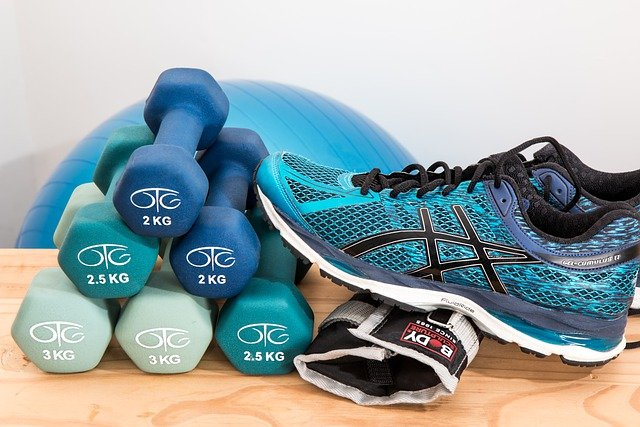Run 5 Miles a Day to Stay Healthy: Fact or Fiction?

What are the Benefits of Running Five Miles a Day?
Running is one of the most commonly practiced activities by those who want to sustain a healthy lifestyle, and rightfully so. Running, in fact, comes in with an array of benefits, both physiological and psychological, and people who practice it swear by it.
Despite running marathons requiring a well-planned training regime, shorter runs are feasible for most healthy adults, as you don’t need to run for hours to improve your health, burn calories, or lose weight. Many people who do it for leisure as well as for health-related reasons run between 5 miles a day to 10 miles a day, depending on factors like fitness level and time availability.
In this article, we will explore the benefits of running 5 miles (which equals approximately 8 kilometers), and we will also give you some tips to avoid injuries.
Health Benefits of Running
It should be no shock to you by now that running is a great way to stay active and keep healthy. What you may not be aware of, though, maybe the specific ways running can help you in this aspect. Below we outlined the main health benefits that you can expect from running 5 miles a day on a regular basis.

Reduced Risk of Developing Cardiovascular Disease
Running is classed as aerobic activity, which means it uses oxygen to produce energy to keep you going. This oxygen is transported to our cells through our blood, which in turn flows through our body thanks to our heart’s pumping activity. And the more you run, the more your heart is required to work, as it needs to pump higher volumes of blood to meet activity requirements.
These mechanisms, if protracted in time, lead to a lower risk of developing cardiovascular diseases, as the heart gets stronger and functions more efficiently. The heart is a muscle, and as such, it needs to “be trained” in order to get stronger and maintain tone. Cardiovascular diseases are conditions that affect the heart and the blood vessels when these get weaker due to lack of activity and include angina, hypertension, heart attacks, heart disease, and stroke.
It is therefore important to maintain your heart strong, and blood vessels healthy by keeping active regularly, and running can be a great way to achieve this.

Improved Lung and Heart Health
As mentioned above, running helps your heart keep strong thanks to increased pumping activity. More blood pumping also translates into more oxygen traveling around the body to sustain exercise and produce energy (also great as fat metabolism occurs in presence of oxygen, but we will talk about this later).
A stronger heart also means that it needs to work less intensely when you are resting, which is why people who are very active or that undertake regular physical activity have an average lower resting heart rate. This is because for unfit people, even walking around the house can put a bigger strain on the heart, just like lifting a heavy shopping bag requires more effort from someone who doesn’t lift weights.
So more bouts of aerobic activity can help you train your cardiac muscle and make it easier to sustain any type of physical activity, from intense training to more relaxed activities. Pumping more oxygen around also means that your lungs are working harder and getting in more air, making them stronger but also more efficient at their job.
This explains why when you run for the first time, you may feel more breathless compared to someone who has been doing it for a while.
Reduced Stress and Improved Mood
Research has shown that running can reduce stress and increase levels of dopamine, the happiness hormone. At the same time, running can also increase the availability of dopamine receptors over time, further increasing its effects on our mood. Blood flow to the brain also increases while we run, which helps reduce stress.

Reduced Risk of Developing T2D
Running can help us burn a fair amount of calories, so it is indicated as a weight loss activity for those who suffer from Type 2 Diabetes, a reversible condition that usually develops in overweight or obese people and is caused by lingering high levels of glucose in the blood, which the body is unable to use as an energy source due to irregular activity of insulin, the hormone that regulates this process in healthy individuals.
The malfunction of insulin is caused by chronic overconsumption of energy-dense foods and lack of exercise, hence why Type 2 Diabetes is known as a lifestyle-related illness. In this regard, running is not only great for consuming more calories and losing weight but it was also found to increase body glucose homeostasis, which means it helps balance out the levels of insulin and glucagon, the two hormones responsible for mobilizing and utilizing glucose to produce energy efficiently.
This suggests that running can also work as a valid preventative exercise for this condition.

Improved Fat Metabolism
Running per se is an aerobic exercise, which means that it uses oxygen to help us sustain the activity. Oxygen, in this instance, is utilized to mobilize both glucose and fat to produce ATP, our body’s energy molecule. Although glucose has the capability of being used in both aerobic and anaerobic conditions, fat is much less versatile and can only be mobilized in the presence of oxygen.
This is due to the different types of muscle fibers we utilize when performing aerobic exercises, such as running, compared to when we are doing anaerobic activities, like lifting heavy weights. These muscle fibers are called slow twitch, or Type 1, which are specifically designed to exert less force but sustain it for longer (hence why long-distance running is also called endurance exercise!).
These muscle fibers are rich in mitochondria, which are little powerhouses that use oxygen, fats, and glucose to produce ATP, and the more you run, the more mitochondria you get in your cells to meet the body’s energy demands, making it more and more effective to produce ATP using this system!
This also means that once you have been running for a while, this increased number of mitochondria automatically makes you more efficient in utilizing fat for energy production, even in your daily tasks, such as walking or cleaning. All of this, in turn, means a little extra boost in weight loss!

Longevity
Studies have shown that running 3 to 7 miles a week can reduce the risks of developing strokes, diabetes, high cholesterol, and heart disease and therefore increases the life expectancy of people.
Similar results were also found in another research looking into the relationship between running and all-cause mortality, as they discovered that even short bouts of this activity (5-10 minutes) at a slow pace but consistently protracted over 15 years showed a reduction in risk of death from all-cause mortality and/or cardiovascular disease by 30% and 45% accordingly.
It is therefore needless to say that running for 5 miles a day can provide you with the same benefits, if not more accentuated.

Cheap
Last but not least, running is a very cheap way to stay healthy! You don’t need to purchase a gym membership or get yourself a personal trainer if you decide to use this activity to stay fit, as you just need to find a nice and safe track near you. However, it is essential to stress the importance of investing in appropriate running footwear, as failure to do so can result in injuries and inflammation of the joints, tendons, and nerves of your lower body.
Another tool you may want to invest in, depending on what your goals are, is a fitness or running tracker, so you can assess and track performance. This is particularly useful if you have a specific goal, such as running your 5 miles under a certain time or increasing mileage within a specified timeframe.

The Downsides of Running 5 Miles a Day
Despite running regularly coming in with a lot of health benefits, you should always be mindful and allow yourself to rest.
In fact, running 5 miles a day may result in overtraining if you don’t give yourself adequate rest between runs and could even result in injuries like shin splints, stress fractures, and muscle tears. If you see your performance falling or start feeling chronically fatigued or in pain, it may be time to get some rest.
The Importance of Starting Slow
Additionally, if you’re just getting started, consider working up to 5 miles a day over the first few weeks of your newly established running routine. Don’t expect to wake up one morning and run a half marathon. If you are a beginner runner, begin slowly and work your way up to an increased running speed and duration. It’s okay if you start out as a slow runner.
If you are determined to become one of the more serious runners so that you can burn calories, lose weight, work on reducing high blood pressure, improve your cardiovascular and musculoskeletal systems, and live a healthier lifestyle, then it’s important to go about the process in the right way.
Advice for the New Runner
As a new runner, begin by investing in a quality and decent pair of running shoes and do some research to ensure that you know what running form you should be modeling. Then pick a couple of soft trails to start out on, especially if you are injury prone. Work your way up to 5 miles a day by beginning with just one mile and then increasing the mileage slowly – you don’t have to start with a five-mile run. Over time, you’ll be able to run the same distance regularly,
Combine that with some additional cross-training, a healthy diet, and a well-thought-out training plan and training schedule so that you can reduce the risk of injuries, avoid burning yourself out, and ensure that you’ll continue to enjoy your new active running lifestyle.
Remember, You Didn’t Wake Up a Marathon Runner
If your goal is to be a marathon runner or to begin race training, work up to that. You’re not going to safely achieve it in the first week.

In a Nutshell…
All in all, running 5 miles regularly can be very beneficial to our health and potentially improve our general physical and mental well-being, and even increase our lifespan! You can see incredible benefits such as weight loss, an increased calorie deficit, reduced blood pressure, increased muscle strength, the ability to fall asleep faster, and even that beautiful runner’s high.
However, don’t forget to start slow, schedule some a regular rest day in between runs to allow your body to recuperate from the new intense routine and physical challenge, and prevent overtraining and related injuries.

References
Chen, H., Chen, C., Spanos, M., Li, G., Lu, R., Bei, Y. and Xiao, J., 2022. Exercise training maintains cardiovascular health: signaling pathways involved and potential therapeutics. Signal Transduction and Targeted Therapy, 7(1), pp.1-18. ( https://www.nature.com/articles/s41392-022-01153-1 )
Damrongthai, C., Kuwamizu, R., Suwabe, K., Ochi, G., Yamazaki, Y., Fukuie, T., Adachi, K., Yassa, M.A., Churdchomjan, W. and Soya, H., 2021. Benefit of human moderate running boosting mood and executive function coinciding with bilateral prefrontal activation. Scientific reports, 11(1), pp.1-12. ( https://www.nature.com/articles/s41598-021-01654-z )
Knudsen, N.H., Stanya, K.J., Hyde, A.L., Chalom, M.M., Alexander, R.K., Liou, Y.H., Starost, K.A., Gangl, M.R., Jacobi, D., Liu, S. and Sopariwala, D.H., 2020. Interleukin-13 drives metabolic conditioning of muscle to endurance exercise. Science, 368(6490), p.eaat3987. ( https://www.science.org/doi/abs/10.1126/science.aat3987 )
Lavie, C.J., Ozemek, C., Carbone, S., Katzmarzyk, P.T. and Blair, S.N., 2019. Sedentary behavior, exercise, and cardiovascular health. Circulation research, 124(5), pp.799-815. (https://www.ahajournals.org/doi/full/10.1161/CIRCRESAHA.118.312669 )
Lee, D.C., Pate, R.R., Lavie, C.J., Sui, X., Church, T.S. and Blair, S.N., 2014. Leisure-time running reduces all-cause and cardiovascular mortality risk. Journal of the American College of Cardiology, 64(5), pp.472-481. ( https://www.jacc.org/doi/abs/10.1016/j.jacc.2014.04.058 )
Noreen, S., Shafique, M., Mian, T.M., Rehman, H.A., Rehman, A., Shafiq, M.S., Zafar, I. and Masood, R., 2021. Impact Of Treadmill Running On Blood Glucose Level Of Type 2 Diabetes Mellitus Patients In Ghurki Trust And Teaching Hospital. Pakistan BioMedical Journal, 4(2), pp.268-271. (http://pakistanbmj.com/journal/index.php/pbmj/article/view/244 )
Pedisic, Z., Shrestha, N., Kovalchik, S., Stamatakis, E., Liangruenrom, N., Grgic, J., Titze, S., Biddle, S.J., Bauman, A.E. and Oja, P., 2020. Is running associated with a lower risk of all-cause, cardiovascular and cancer mortality, and is the more the better? A systematic review and meta-analysis. British journal of sports medicine, 54(15), pp.898-905. (https://bjsm.bmj.com/content/54/15/898.abstract )
Pereira, J.G., 2022. Running and Metabolic Diseases. In The Running Athlete (pp. 43-58). Springer, Berlin, Heidelberg. ( https://link.springer.com/chapter/10.1007/978-3-662-65064-6_7 )
Roeh, A., Lembeck, M., Papazova, I., Pross, B., Hansbauer, M., Schoenfeld, J., Haller, B., Halle, M., Falkai, P., Scherr, J. and Hasan, A., 2020. Marathon running improves mood and negative affect. Journal of Psychiatric Research, 130, pp.254-259. ( https://www.sciencedirect.com/science/article/abs/pii/S002239562030916X )
Wang, Y., Lee, D.C., Brellenthin, A.G., Eijsvogels, T.M., Sui, X., Church, T.S., Lavie, C.J. and Blair, S.N., 2019. Leisure-time running reduces the risk of incident type 2 diabetes. The American journal of medicine, 132(10), pp.1225-1232. (https://www.sciencedirect.com/science/article/abs/pii/S0002934319304218 )
Yargic, M.P., Torgutalp, S., Akin, S., Babayeva, N., Torgutalp, M. and Demirel, H.A., 2019. Acute long-distance trail running increases serum IL-6, IL-15, and Hsp72 levels. Applied Physiology, Nutrition, and Metabolism, 44(6), pp.627-631. (https://cdnsciencepub.com/doi/abs/10.1139/apnm-2018-0520 )






